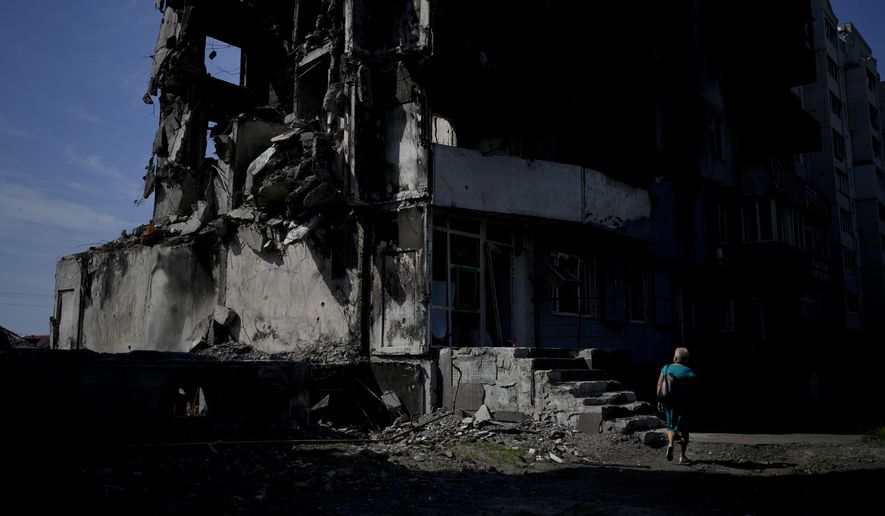KYIV, Ukraine (AP) — A Ukrainian photojournalist and a soldier accompanying him appear to have been “coldly executed” during the first weeks of the war in Ukraine as they searched in Russian-occupied woods for the photographer’s missing camera drone, Reporters Without Borders said Wednesday.
The press freedom group said it sent investigators back to the woods north of the capital, Kyiv, where the bodies of Maks Levin and serviceman Oleksiy Chernyshov were found April 1. The group said its team counted 14 bullet holes in the burned hulk of the pair’s car, which remained at the spot.
Citing the findings from its investigation into the deaths, the group said disused Russian positions, one of them still booby-trapped, were found close by. Also found were the remains of food rations, cigarette packs and other litter seemingly left by Russian soldiers.
Some of Levin and Chernyshov’s belongings, including the soldier’s ID papers and parts of his bulletproof vest and the photographer’s helmet, were also recovered, Reporters Without Borders said.
A Ukrainian team with metal detectors also located a bullet buried in the soil where Levin’s body had been, it said. The group said that finding suggests “he was probably killed with one, perhaps two bullets fired at close range when he was already on the ground.”
A jerrycan for gasoline was also found close to where Chernyshov’s burned body was found, it added.
Reporters Without Borders said its findings “show that the two men were doubtless coldly executed.”
Levin and Chernyshov were last heard from on March 13. A GPS tracker in their vehicle gave their last position, in woods north of Kyiv, the group said.
The group speculated that Levin may have been hunting for his drone when he and Chernyshov were killed.
It said Levin lost his drone in the area on March 10 and had been unable to recover it because he’d come under Russian fire. Drones have become a common tool for photojournalists to get aerial photos and video.
Reporters Without Borders said Levin had on occasion shared information gleaned from his drone, including about Russian positions, with Ukrainian forces.
“But the use of his drone was first and foremost a journalistic endeavor, confirmed by his entourage and shown by the images sold to the media since the start of the Russian invasion,” it said.
The group said it turned over the evidence it collected and dozens of photos to Ukrainian investigators.
The group said it was unable to confirm whether autopsies were performed on the men’s bodies, a step it called essential for the investigation into their deaths.
It also appealed for Ukrainian defense and intelligence agencies to provide investigators with whatever information they have about Russian units that occupied the area during Moscow’s failed assault on Kyiv.
Separately, Russian officials said a drone strike caused a fire at an oil processing plant in southwestern Russia on Wednesday.
The blaze engulfed a piece of machinery at the Novoshakhtinsk plant in the Rostov-on-Don region. Authorities said that dozens of firefighters quickly contained the fire and no one was hurt.
The plant said in a statement that the fire was caused by a strike carried out by two drones, describing it as a “terrorist” act. It didn’t give details, but state news agency Tass reported that two Ukrainian drones flew over the plant and one of them slammed into a heat exchanger, triggering the fire.
The regional governor, Vasily Golubev, said that fragments of two drones were found on the territory of the plant.
Ukrainian authorities have not confirmed the strike.




Please read our comment policy before commenting.